Road bikes evolution
#126
Senior Member
Thread Starter
28 mm is now what the pros race and 30-32 mm for Paris Roubaix. The plus point for us casual riders is that they are more comfortable and have more grip. My Canyon Endurace wheel set is optimised around 30 mm tyres and they are both fast and comfortable. My local roads are a mixed bag and I really appreciate the extra tyre volume. I run them at around 4-4.5 bar, as do the pros. It’s all changed over the past few years.
But to turn your question around, why would a casual rider be obsessed with very narrow, high pressure tyres? I could understand pros tolerating them IF they were even slightly faster, but even the pros are moving to wider, lower pressure tyres. I would have thought it would be a no-brainer for the average rider. It was for me anyway.
But to turn your question around, why would a casual rider be obsessed with very narrow, high pressure tyres? I could understand pros tolerating them IF they were even slightly faster, but even the pros are moving to wider, lower pressure tyres. I would have thought it would be a no-brainer for the average rider. It was for me anyway.
As a non racer, I would say that my recent move from 23 to 28mm tires (same brand / type) and 1 kg heavier bike can be felt as having a negative impact on performance, although the new bike claims some further aero gains such as: optimized fork, aero “D” shape for seat post and tube, carbon aerodynamic handlebar, 1 cm longer reach and (roughly) 1 cm lower handlebars. However, the new bike feels less agile, a little harder to accelerate and marginally slower on steady rides on flat roads. I didn’t try climbing yet, but I doubt it would feel better.
In my case, it is like the obsolete and intuitive principle still applies: skinnier, less spokes and 1kg lighter mean less area exposed to wind, smaller weight to carry and, finally, a little faster ride. As somebody said here, speed is just fun for casual riders. But we spend a lot of money only for this fun; otherwise, if we only need fitness, an eight speeds, below 1000 EUR and 9+ kg bike can fully fit the bill…
Last edited by Redbullet; 04-30-23 at 01:27 PM.
#127
Method to My Madness
Join Date: Nov 2020
Location: Orange County, California
Posts: 3,667
Bikes: Trek FX 2, Cannondale Synapse, Cannondale CAAD4, Santa Cruz Stigmata GRX
Mentioned: 4 Post(s)
Tagged: 0 Thread(s)
Quoted: 1950 Post(s)
Liked 1,475 Times
in
1,022 Posts
... As a non racer, I would say that my recent move from 23 to 28mm tires (same brand / type) and 1 kg heavier bike can be felt as having a negative impact on performance, although the new bike claims some further aero gains such as: optimized fork, aero “D” shape for seat post and tube, carbon aerodynamic handlebar, 1 cm longer reach and (roughly) 1 cm lower handlebars. However, the new bike feels less agile, a little harder to accelerate and marginally slower on steady rides on flat roads. I didn’t try climbing yet, but I doubt it would feel better.
#128
Senior Member
Thread Starter
Overall, a marginally better technical setup which leads to marginally lower performance in speed.
#129
Senior Member
Join Date: May 2021
Posts: 8,456
Mentioned: 12 Post(s)
Tagged: 0 Thread(s)
Quoted: 4420 Post(s)
Liked 4,873 Times
in
3,017 Posts
Some pros might still use 25 mm tyres in some races, but 28 mm is now pretty standard. Sometimes they use 25 mm front and 28 mm rear. For the cobbled classics they use 30 or 32 mm even with hundreds of km on normal paved roads.
Another clue is that the latest generation of aero wheels are often optimised around wider tyres - usually 28 mm.
Your new race bike came with wider tyres as a reflection of what the pros are now riding. I’m pretty sure they are not trying to make their bikes slower.
#130
Advocatus Diaboli
Join Date: Feb 2015
Location: Wherever I am
Posts: 8,641
Bikes: Merlin Cyrene, Nashbar steel CX
Mentioned: 14 Post(s)
Tagged: 1 Thread(s)
Quoted: 4739 Post(s)
Liked 1,533 Times
in
1,004 Posts
It's interesting to look at a chart like the below. Something appeared to happen around Y2K when avg speeds seemed to jump up from the decade prior, but since then hard to see any real gains.
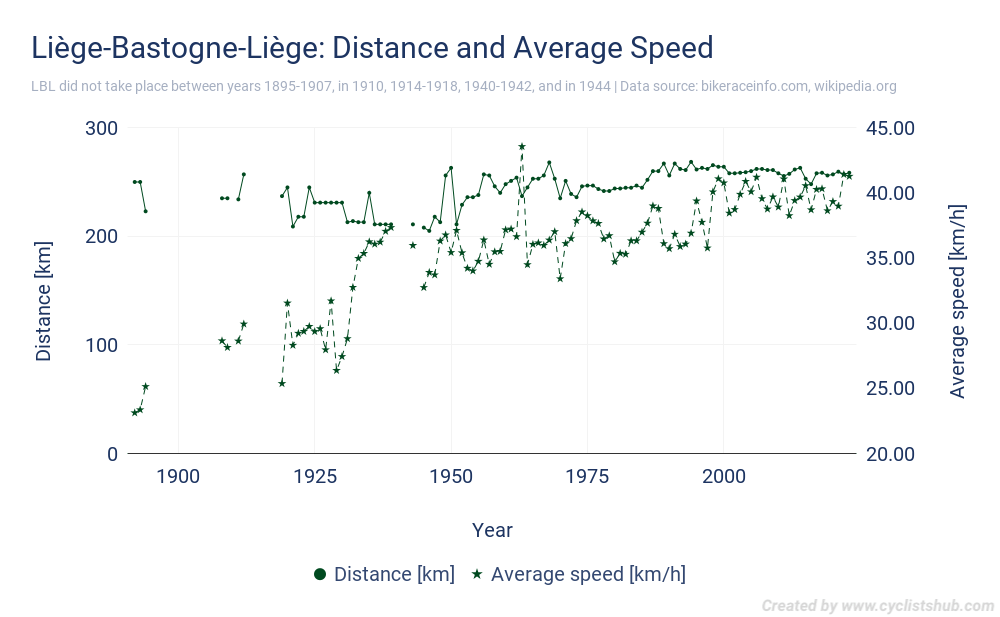

#131
Senior Member
Join Date: Jul 2020
Posts: 702
Bikes: '23 Poseidon Redwood, '07 Specialized Roubaix Comp Triple, '12 Gravity Fixie, '21 Liv Rove 4, '06? Giant EB Spirit
Mentioned: 0 Post(s)
Tagged: 0 Thread(s)
Quoted: 345 Post(s)
Liked 237 Times
in
151 Posts
For road riding in dry, non dusty environments I prefer higher end rim brakes. For mountain/gravel I prefer disc (dual piston cable works great for me) where I ride 2.6” wide tires.
I feel discs on road bikes is unnecessary unless you ride in the wet. Just my $.02
I feel discs on road bikes is unnecessary unless you ride in the wet. Just my $.02
Likes For Symox:
#132
Senior Member
Join Date: May 2021
Posts: 8,456
Mentioned: 12 Post(s)
Tagged: 0 Thread(s)
Quoted: 4420 Post(s)
Liked 4,873 Times
in
3,017 Posts
I find discs better on alpine terrain with steep descents, wet or dry. On flatter terrain and mellow rolling hills I don’t really mind what brakes I have. My riding terrain is mixed enough to make discs a definite preference, so I’m happy that the industry eventually went that way.
#135
Senior Member
Thread Starter
You just need to read current trusted sources of info and look at the spec of current £10k cutting edge race bikes.
Another clue is that the latest generation of aero wheels are often optimised around wider tyres - usually 28 mm.
Your new race bike came with wider tyres as a reflection of what the pros are now riding. I’m pretty sure they are not trying to make their bikes slower.
Another clue is that the latest generation of aero wheels are often optimised around wider tyres - usually 28 mm.
Your new race bike came with wider tyres as a reflection of what the pros are now riding. I’m pretty sure they are not trying to make their bikes slower.
The same applies to weight increase: The very expensive bikes compensated for the extra weight of disk brakes and electronic group set by reducing weight elsewhere. But for lower tier bikes, this extra weight was only added to the bike.
The above might explain why a very expensive bike (say a “pro bike”) might perform today marginally better than its older equivalent, whilst a lower tier bike (say “casual rider bike”) performs today lower than its older (skinnier and lighter) equivalent.
#136
Senior Member
Join Date: May 2021
Posts: 8,456
Mentioned: 12 Post(s)
Tagged: 0 Thread(s)
Quoted: 4420 Post(s)
Liked 4,873 Times
in
3,017 Posts
25 mm tires are still used – see for example Canyon Ultimate CFR DI2, 10+ KEUR, with 6.3 kg weight. I think 28mm is overall better in aero setups (expensive aero wheels). But when producers force you to buy 28mm tires on common aluminum wheels, the losses from lower aerodynamics and higher weight might be bigger than gains in rolling resistance.
The same applies to weight increase: The very expensive bikes compensated for the extra weight of disk brakes and electronic group set by reducing weight elsewhere. But for lower tier bikes, this extra weight was only added to the bike.
The above might explain why a very expensive bike (say a “pro bike”) might perform today marginally better than its older equivalent, whilst a lower tier bike (say “casual rider bike”) performs today lower than its older (skinnier and lighter) equivalent.
The same applies to weight increase: The very expensive bikes compensated for the extra weight of disk brakes and electronic group set by reducing weight elsewhere. But for lower tier bikes, this extra weight was only added to the bike.
The above might explain why a very expensive bike (say a “pro bike”) might perform today marginally better than its older equivalent, whilst a lower tier bike (say “casual rider bike”) performs today lower than its older (skinnier and lighter) equivalent.
I would tend to agree that 28 mm tyres on narrow rims are not ideal (mushroom profile), but I think they are still better on rougher roads. IME they are definitely better on modern wider rims.
Whether or not a lower tier bike “performs” better or worse than an older equivalent depends entirely on your riding terrain and priorities. If it involves a lot of steep climbing then weight is inevitably a penalty for the newer bike. I think for everything else the newer bike is an improvement.
For me personally, the big difference is the higher volume tyres for long, hard century events on mixed roads. They reduce fatigue and are at least as fast rolling, probably faster on some surfaces. On a second tier bike I’m carrying 0.7 kg of extra weight, which I don’t notice (unlike the tyres, disc brakes and electronic shifting which I do notice).
Maybe for your riding conditions you are marginally losing out with a new, lower tier bike or maybe it’s just all in your head? Either way you may as well ride an older bike if you perceive it to be faster, better. You can fit narrower tyres on your new bike too if you really think they are faster.
#137
Junior Member
I recently switched from a 2012 Cannondale Evo Hi Mod SRAM Red mechanical 10sp to a Specialized Aethos Pro AXS Force 12sp. Agree with the OP that prices when comparing same level mechanical to electronic have increased significantly. However, on a more positive note the wheels, saddle, and bars on the Aethos are nice, on the Evo I never even used the original aluminum rims. I also find the disc brakes and electronic shifting to be a big improvement, brake modulation is much better on descents and into corners. Shifting is more precise, I enjoy the enhanced modes, and overall the bike is an improved experience. To summarize, prices have gone WAY up, but you are getting an improved product.
#138
Full Member
Join Date: Sep 2019
Posts: 393
Mentioned: 18 Post(s)
Tagged: 0 Thread(s)
Quoted: 170 Post(s)
Liked 264 Times
in
146 Posts
I do like modern aero bikes for what they do well (namely, thru axle stiffness, powerful disc brakes, frame clearances for wider rims and tires, etc), but I still sometimes miss my 11-yr old Felt ar1 with di2 Dura Ace and staggered CLX rims with 28mm gp5s (15.5 lbs, pic below)... what with its stupidly simple internal brake cable routing (housing easily slides through the top tube "housing tunnel") and general ease of self-service. If it was slower than my Aeroad, I sure couldn't tell. OTOH, the ar1's hi mod carbon layup offered more bottom bracket stiffness and overall responsiveness than the mid spec CF SL carbon... which felt soft by comparison on hard out-of-the-saddle efforts. Makes sense as the ar1 was $10k in 2012 dollars. But at the time I didn't want to spend even more than that for the Aeroad CFR's layup.
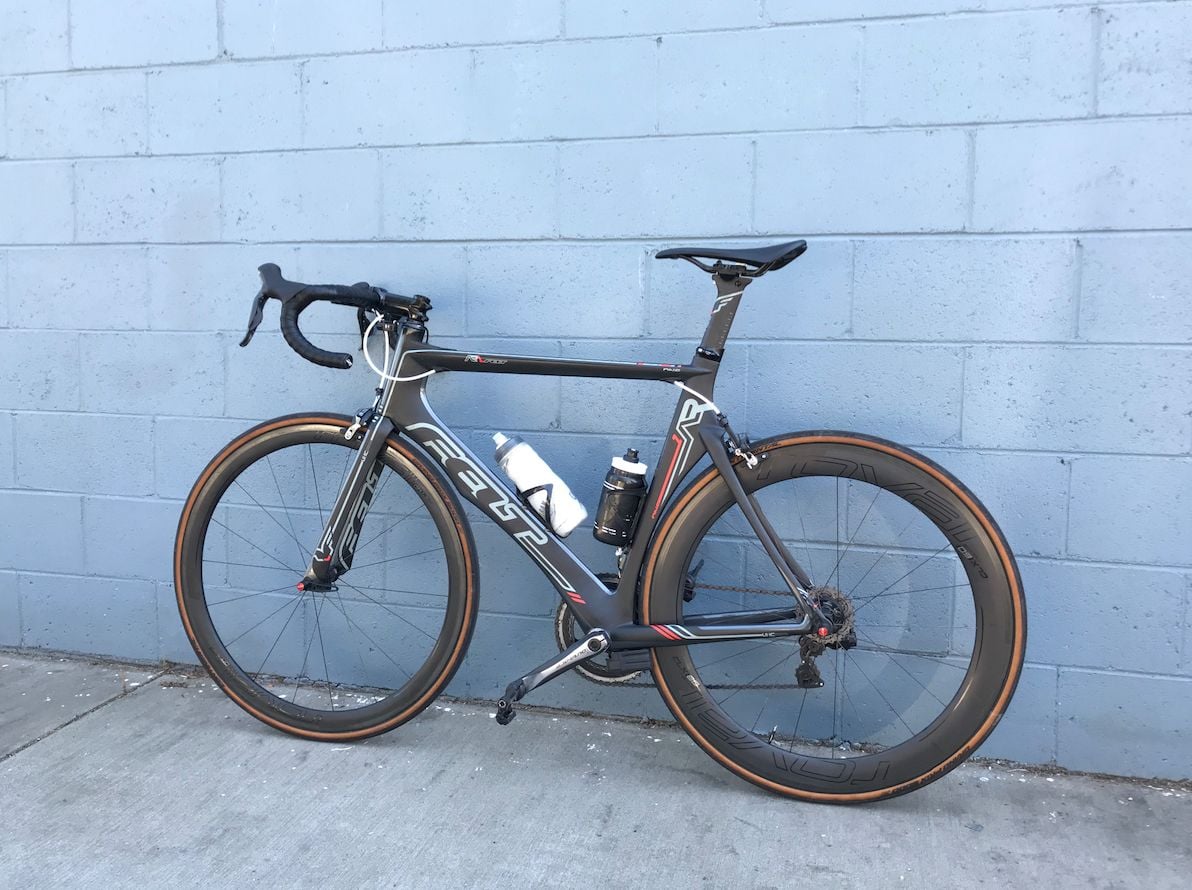
Similar frame shape of my Aeroad (later sold to upgrade to an aero disc bike with top tier carbon)
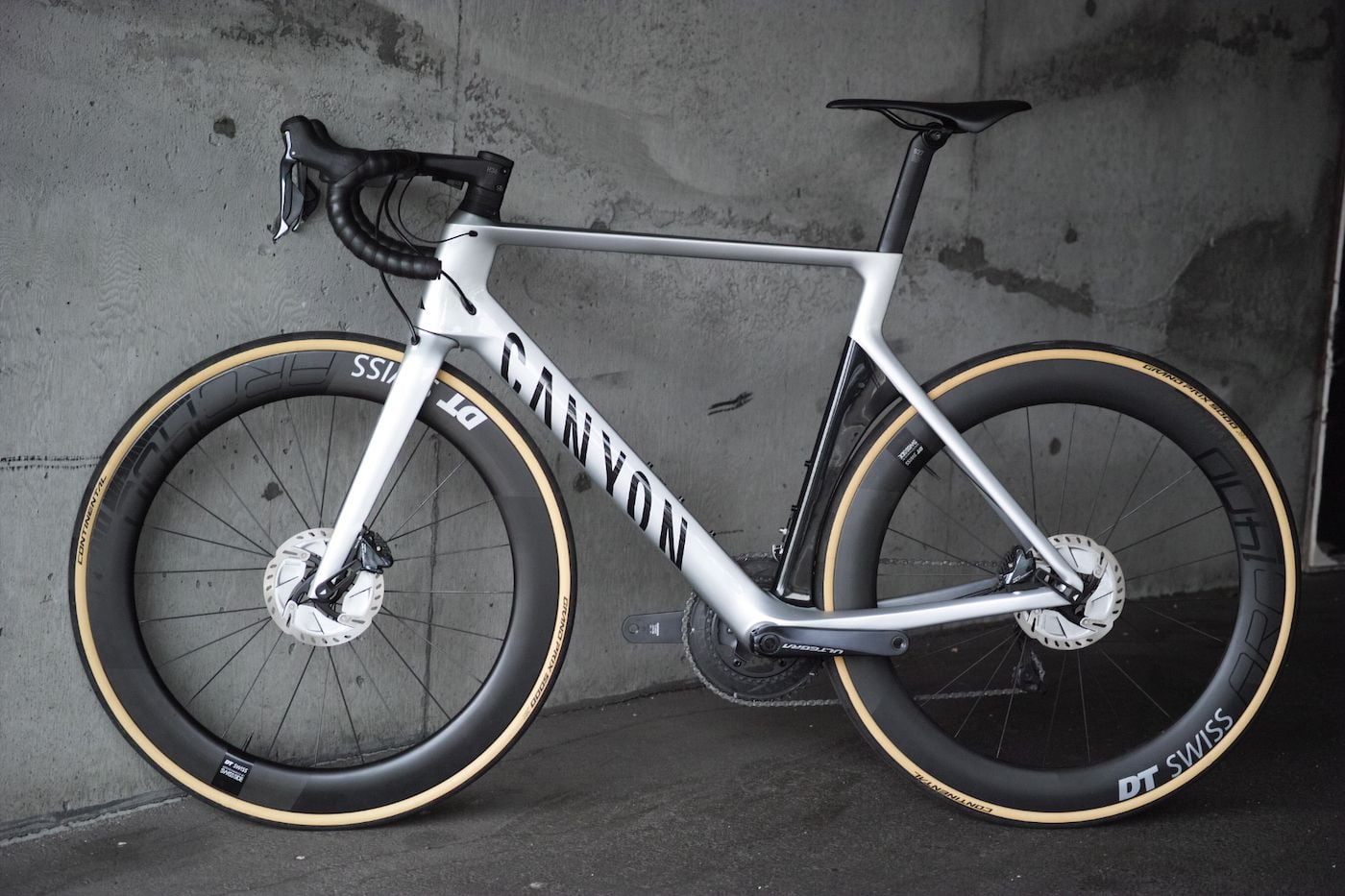
Back to '92 aero design
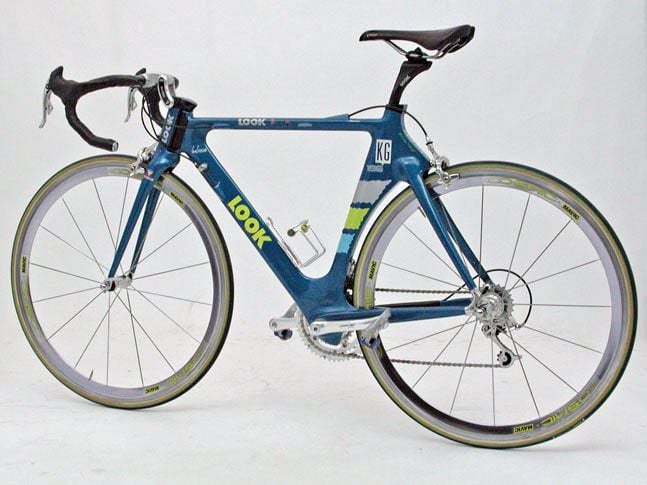
vs other modern shapes

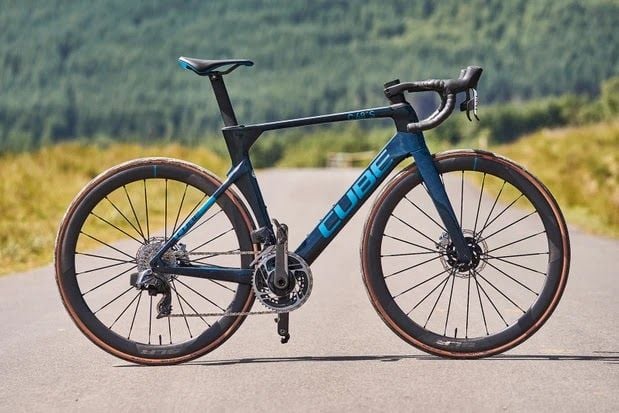
Maybe $11k for something like a Tokyo edition CFR isn't that crazy (people were spending that 10yrs ago on high end rim stuff)... assuming one has insurance for riding/race/crit mishaps!
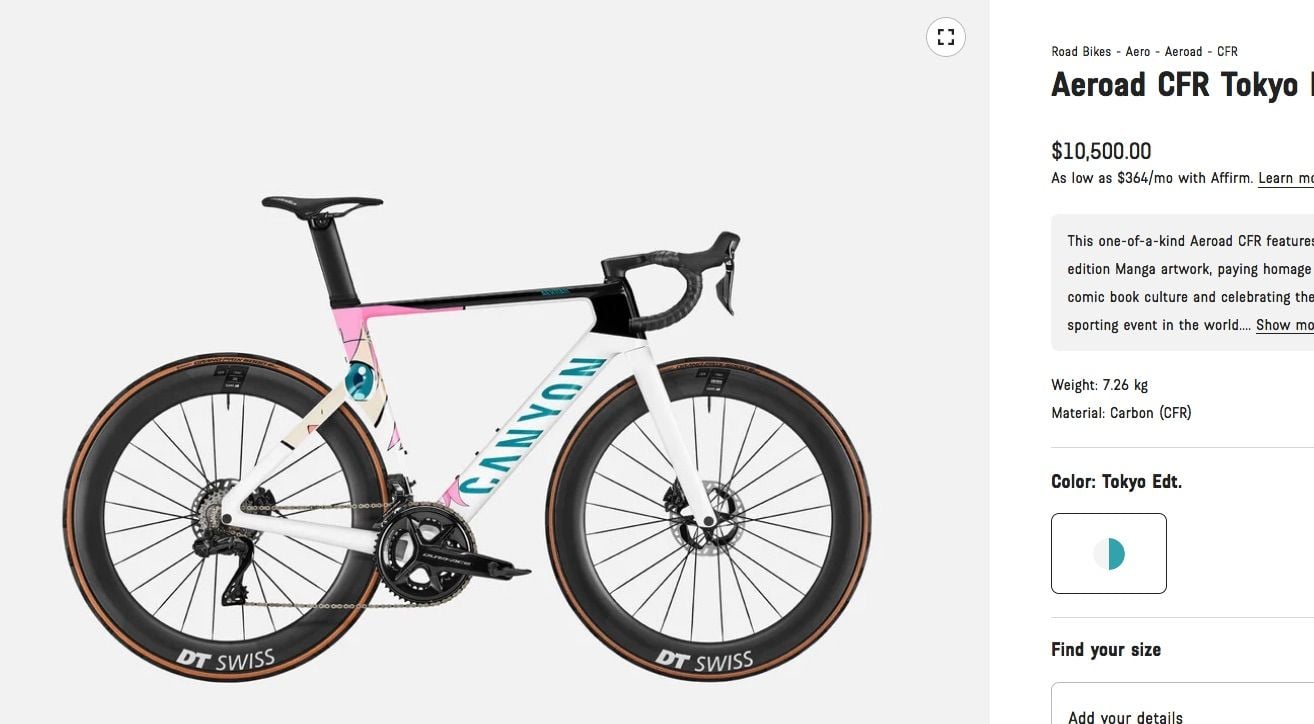

Similar frame shape of my Aeroad (later sold to upgrade to an aero disc bike with top tier carbon)

Back to '92 aero design

vs other modern shapes


Maybe $11k for something like a Tokyo edition CFR isn't that crazy (people were spending that 10yrs ago on high end rim stuff)... assuming one has insurance for riding/race/crit mishaps!

Likes For ctak:
#139
Senior Member
Join Date: May 2021
Posts: 8,456
Mentioned: 12 Post(s)
Tagged: 0 Thread(s)
Quoted: 4420 Post(s)
Liked 4,873 Times
in
3,017 Posts
The few personal data points I have from buying Canyon bikes (road and mtb) indicates that their pricing hasn't really changed much over the last 4 or 5 years at least. There are less discounts available now though. My 2019 Canyon Neuron SL9 Ltd was £4,500 (discounted from £5,000 in a sale). Same bike is now £5,749 but with electronic shifting, which I think would be great as cables on full suss mtbs are a bit of a mess. Or there is a GX AXS option for £4,800, which is what I would probably buy if I was in the market today. Technically it's a level down from my 2019 bike, but it's a newer, electronic groupset.
To put Canyon pricing in perspective, my 2015 Specialized Enduro Expert was also £4,500 with lower spec components. Going back a lot further to 2004, I paid about £3,500 for a similar high-end mtb. My late 90's Ultegra spec road bike with early Cadex carbon frame was around £2,000 built with discounted parts.
Bikes at this level have always been pretty expensive, but now there is a wider range of tier pricing with "halo" specs at the very top end that have nothing you can compare like-for-like in the past. Personally I don't think those "halo" bikes are worth the extra cost over their second tier specs, but the choice is there. It's just the law of diminishing returns, which I think is particularly high with modern road bikes.
Last edited by PeteHski; 05-04-23 at 05:40 AM.
#140
Full Member
Join Date: Sep 2019
Posts: 393
Mentioned: 18 Post(s)
Tagged: 0 Thread(s)
Quoted: 170 Post(s)
Liked 264 Times
in
146 Posts
Bikes at this level have always been pretty expensive, but now there is a wider range of tier pricing with "halo" specs at the very top end that have nothing you can compare like-for-like in the past. Personally I don't think those "halo" bikes are worth the extra cost over their second tier specs, but the choice is there. It's just the law of diminishing returns, which I think is particularly high with modern road bikes.
#141
Senior Member
Thread Starter
Canyon has good price offers for the same quality, compared with bigger brands. Their internet commerce probably leads to smaller costs which translate in (roughly) 10-15% lower selling prices. But they also follow the evolution of the market.
A market evolution based on performance and good prices would have been:
Higher tier, “pros level”: Expensive, carbon wheels, disk brakes and electronic shifting, light weight and very good aerodynamics. Overall, very high performance.
Lower tier “casual riders”: Less expensive, aluminum wheels, rim brakes and mechanical shifting, light weight and reasonable aerodynamics. Overall, high performance, very close to higher tier.
But nobody wants the hassle and costs of maintaining separate production or assembly lines for disk / mechanical brakes and electronic / mechanical shifting. Since “pros” level dictates the trend, then disk brakes and electronic shifting become the norm for casual riders as well. The result for lower tier “casual riders” is: Relatively expensive, aluminum wheels, disk brakes and electronic shifting from lower level, no light weight and no reasonable aerodynamics (incl. bulky tires not optimized on aluminum rims). Overall, lower performance, not close to higher tier.
Pretty much nothing in between.
A market evolution based on performance and good prices would have been:
Higher tier, “pros level”: Expensive, carbon wheels, disk brakes and electronic shifting, light weight and very good aerodynamics. Overall, very high performance.
Lower tier “casual riders”: Less expensive, aluminum wheels, rim brakes and mechanical shifting, light weight and reasonable aerodynamics. Overall, high performance, very close to higher tier.
But nobody wants the hassle and costs of maintaining separate production or assembly lines for disk / mechanical brakes and electronic / mechanical shifting. Since “pros” level dictates the trend, then disk brakes and electronic shifting become the norm for casual riders as well. The result for lower tier “casual riders” is: Relatively expensive, aluminum wheels, disk brakes and electronic shifting from lower level, no light weight and no reasonable aerodynamics (incl. bulky tires not optimized on aluminum rims). Overall, lower performance, not close to higher tier.
Pretty much nothing in between.
Last edited by Redbullet; 05-04-23 at 03:26 PM.
#142
Senior Member
Join Date: May 2021
Posts: 8,456
Mentioned: 12 Post(s)
Tagged: 0 Thread(s)
Quoted: 4420 Post(s)
Liked 4,873 Times
in
3,017 Posts
Canyon has good price offers for the same quality, compared with bigger brands. Their internet commerce probably leads to smaller costs which translate in (roughly) 10-15% lower selling prices. But they also follow the evolution of the market.
A market evolution based on performance and good prices would have been:
Higher tier, “pros level”: Expensive, carbon wheels, disk brakes and electronic shifting, light weight and very good aerodynamics. Overall, very high performance.
Lower tier “casual riders”: Less expensive, aluminum wheels, rim brakes and mechanical shifting, light weight and reasonable aerodynamics. Overall, high performance, very close to higher tier.
But nobody wants the hassle and costs of maintaining separate production or assembly lines for disk / mechanical brakes and electronic / mechanical shifting. Since “pros” level dictates the trend, then disk brakes and electronic shifting become the norm for casual riders as well. The result for lower tier “casual riders” is: Relatively expensive, aluminum wheels, disk brakes and electronic shifting from lower level, no light weight and no reasonable aerodynamics (incl. bulky tires not optimized on aluminum rims). Overall, lower performance, not close to higher tier.
Pretty much nothing in between.
A market evolution based on performance and good prices would have been:
Higher tier, “pros level”: Expensive, carbon wheels, disk brakes and electronic shifting, light weight and very good aerodynamics. Overall, very high performance.
Lower tier “casual riders”: Less expensive, aluminum wheels, rim brakes and mechanical shifting, light weight and reasonable aerodynamics. Overall, high performance, very close to higher tier.
But nobody wants the hassle and costs of maintaining separate production or assembly lines for disk / mechanical brakes and electronic / mechanical shifting. Since “pros” level dictates the trend, then disk brakes and electronic shifting become the norm for casual riders as well. The result for lower tier “casual riders” is: Relatively expensive, aluminum wheels, disk brakes and electronic shifting from lower level, no light weight and no reasonable aerodynamics (incl. bulky tires not optimized on aluminum rims). Overall, lower performance, not close to higher tier.
Pretty much nothing in between.
Likes For PeteHski:
#143
Senior Member
Join Date: May 2021
Posts: 8,456
Mentioned: 12 Post(s)
Tagged: 0 Thread(s)
Quoted: 4420 Post(s)
Liked 4,873 Times
in
3,017 Posts
I've also noticed modifications to their low-mid spec stuff in the face of inflation, etc. For example, my 7.6kg 2019 CF SL Aeroad with Di2 Ultegra and Arc 1400 wheels was $5k ($4500 on sale). Canyon no longer offers the CF SL with this "value" build... now its heavier Arc1600s with mechanical Ultegra. In 2023, one would have to step up to the 7.7kg SLX Aeroad for the di2 + Arc1400 build at $6500. Of course, if one is resolute on buying NEW, there is certainly value to be found in Canyon offerings compared to what others (Specialized, etc) are offering.
I remember 2019 was a good year for discounts. I bought my Giant Defy Advanced Pro 2 for £2,000, discounted from £3,000k at end of season. 105 mechanical build with carbon wheels. Also got £500 discount on my Canyon Neuron mtb. Then obviously the pandemic kicked in and supply dried up over the next 2 years, with groupset supply being the major bottleneck and no end of season discounts. I was lucky to get my Canyon Endurace at the end of 2021 as they were selling out batches in a single day. Supply from Canyon still looks very patchy today, but their prices are the same, or even slightly lower than when I bought mine.
#144
Advocatus Diaboli
Join Date: Feb 2015
Location: Wherever I am
Posts: 8,641
Bikes: Merlin Cyrene, Nashbar steel CX
Mentioned: 14 Post(s)
Tagged: 1 Thread(s)
Quoted: 4739 Post(s)
Liked 1,533 Times
in
1,004 Posts
Looks like the current Aeroroad SL is being phased out with now literally only 1 variant in limited sizes. At $4,500 USD I still think it is reasonable value, although not as good as your 2019 spec on sale. A little heavier at 7.8 kg, but that's not going to make any measurable difference.
.
.
CANYON SL8 AERO
#145
Should Be More Popular
Join Date: Dec 2007
Location: Malvern, PA (20 miles West of Philly)
Posts: 43,064
Bikes: 1986 Alpine (steel road bike), 2009 Ti Habenero, 2013 Specialized Roubaix
Mentioned: 560 Post(s)
Tagged: 2 Thread(s)
Quoted: 22608 Post(s)
Liked 8,929 Times
in
4,161 Posts
#146
Senior Member
Thread Starter
Yes, a bit of a stretch to say that everything becoming less aero. I was only thinking about the mix of large tires and low deep, shallow Al rims, not about frames or forks.
#147
Senior Member
Join Date: May 2022
Location: USA - Southwest PA
Posts: 3,100
Bikes: Cannondale - Gary Fisher - Giant - Litespeed - Schwinn Paramount - Schwinn (lugged steel) - Trek OCLV
Mentioned: 6 Post(s)
Tagged: 0 Thread(s)
Quoted: 1401 Post(s)
Liked 1,886 Times
in
1,085 Posts
#148
Senior Member
Join Date: Dec 2019
Location: 757
Posts: 11,255
Bikes: Madone, Emonda, 5500, Ritchey Breakaway
Mentioned: 3 Post(s)
Tagged: 0 Thread(s)
Quoted: 10238 Post(s)
Liked 5,188 Times
in
2,226 Posts
Do they actually put perform 105 rim brakes?
3 rim brake bikes. One 105 R7000, one ultegra 6800 and one tiagra something 2013 tech. They all brake the same.
Tempted to throw some dura ace or ultegra on the 2013 but that would be more for weight savings than brake action.
#149
Senior Member
Join Date: May 2021
Posts: 8,456
Mentioned: 12 Post(s)
Tagged: 0 Thread(s)
Quoted: 4420 Post(s)
Liked 4,873 Times
in
3,017 Posts
Just trying to understand the reasons, because the normal evolution usually means increase in performance (or at least stagnation).
Yes, a bit of a stretch to say that everything becoming less aero. I was only thinking about the mix of large tires and low deep, shallow Al rims, not about frames or forks.
Yes, a bit of a stretch to say that everything becoming less aero. I was only thinking about the mix of large tires and low deep, shallow Al rims, not about frames or forks.
The bottom line for me is that nobody could convince me to go back to a rim-braked bike on narrow tyres and mechanical shifting. "Serious" riders can choose to have it all, but the low weight now comes with a major cost that probably doesn't make sense for all but the most competitive racers fighting for the podium, especially hill climbers. For me, 0.7 kg weight makes no significant difference. It's worth next to nothing and only really measurable on major climbs. Maybe worth 30 secs on a 1 hour climb up Alpe d'Huez for example.
Likes For PeteHski:
#150
Senior Member
Join Date: May 2021
Posts: 8,456
Mentioned: 12 Post(s)
Tagged: 0 Thread(s)
Quoted: 4420 Post(s)
Liked 4,873 Times
in
3,017 Posts
Do they actually put perform 105 rim brakes?
3 rim brake bikes. One 105 R7000, one ultegra 6800 and one tiagra something 2013 tech. They all brake the same.
Tempted to throw some dura ace or ultegra on the 2013 but that would be more for weight savings than brake action.
3 rim brake bikes. One 105 R7000, one ultegra 6800 and one tiagra something 2013 tech. They all brake the same.
Tempted to throw some dura ace or ultegra on the 2013 but that would be more for weight savings than brake action.









